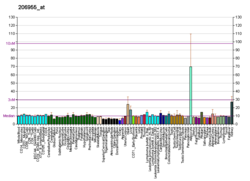| AQP7 | |||||||||||||||||||||||||||||||||||||||||||||||||||
|---|---|---|---|---|---|---|---|---|---|---|---|---|---|---|---|---|---|---|---|---|---|---|---|---|---|---|---|---|---|---|---|---|---|---|---|---|---|---|---|---|---|---|---|---|---|---|---|---|---|---|---|
| Identifiers | |||||||||||||||||||||||||||||||||||||||||||||||||||
| Aliases | AQP7 , AQP7L, AQP9, AQPap, GLYCQTL, aquaporin 7 | ||||||||||||||||||||||||||||||||||||||||||||||||||
| External IDs | OMIM: 602974; MGI: 1314647; HomoloGene: 48000; GeneCards: AQP7; OMA:AQP7 - orthologs | ||||||||||||||||||||||||||||||||||||||||||||||||||
| |||||||||||||||||||||||||||||||||||||||||||||||||||
| |||||||||||||||||||||||||||||||||||||||||||||||||||
| |||||||||||||||||||||||||||||||||||||||||||||||||||
| |||||||||||||||||||||||||||||||||||||||||||||||||||
| |||||||||||||||||||||||||||||||||||||||||||||||||||
| Wikidata | |||||||||||||||||||||||||||||||||||||||||||||||||||
| |||||||||||||||||||||||||||||||||||||||||||||||||||
Aquaporin-7 (AQP-7) is a protein that in humans is encoded by the AQP7 gene. [5] [6]
Contents
Aquaporins/major intrinsic proteins (MIP) are a family of water-selective membrane channels. Aquaporin-7 has greater sequence similarity with AQP3 and AQP9 and they may be a subfamily. Aquaporin-7 and AQP3 are at the same chromosomal location suggesting that 9p13 may be a site of an aquaporin cluster. Aquaporin-7 facilitates water, glycerol and urea transport. It may play an important role in thermoregulation in the form of perspiration, and sperm function. [6]




